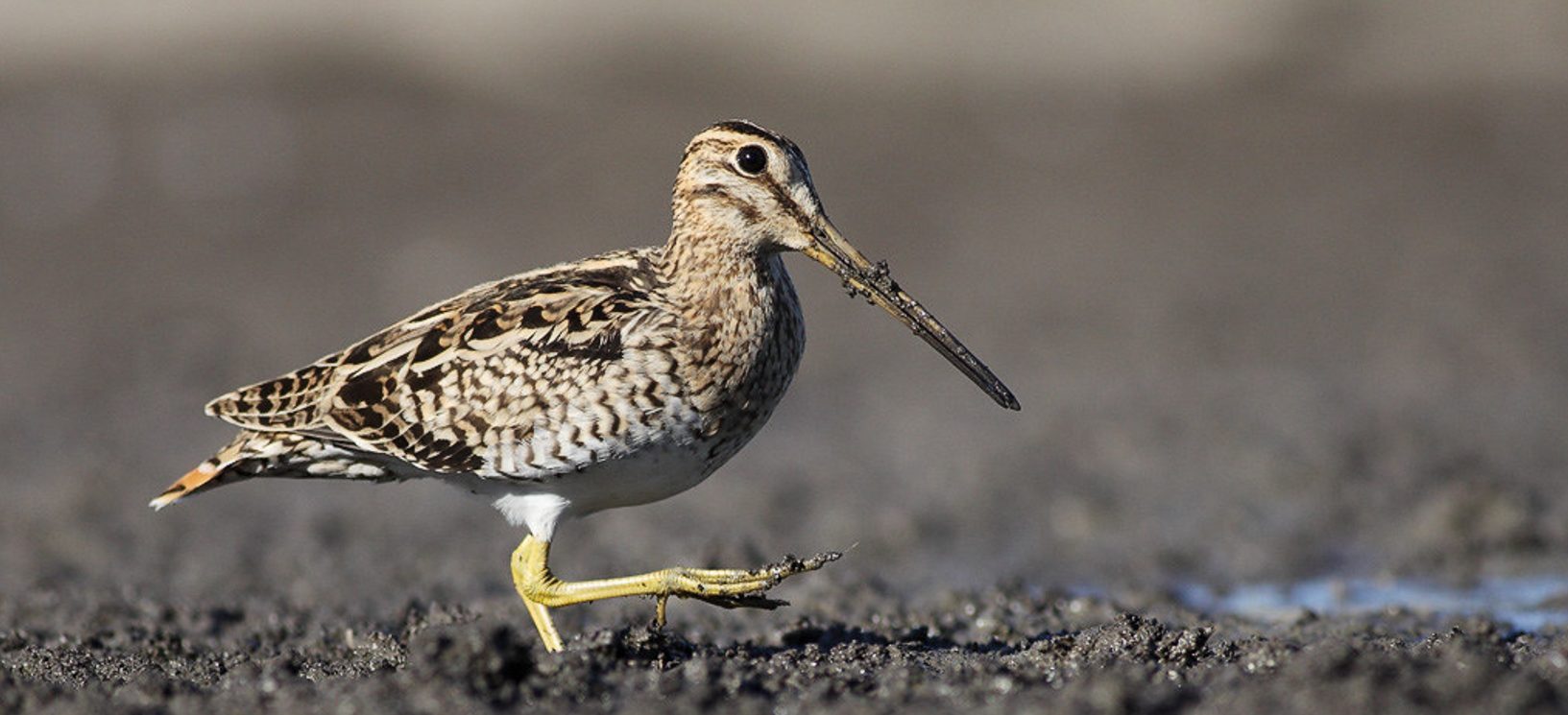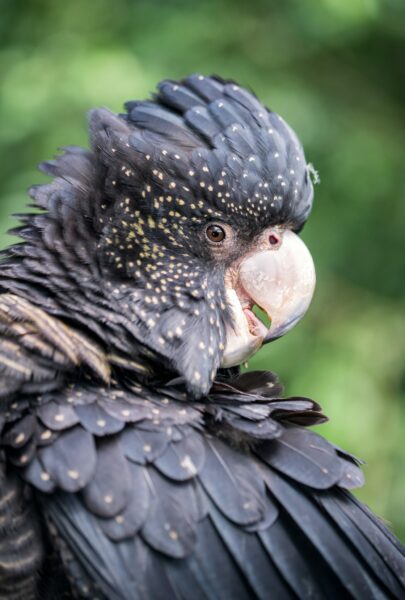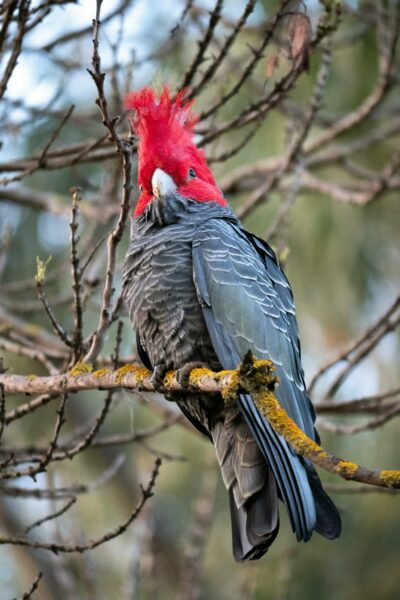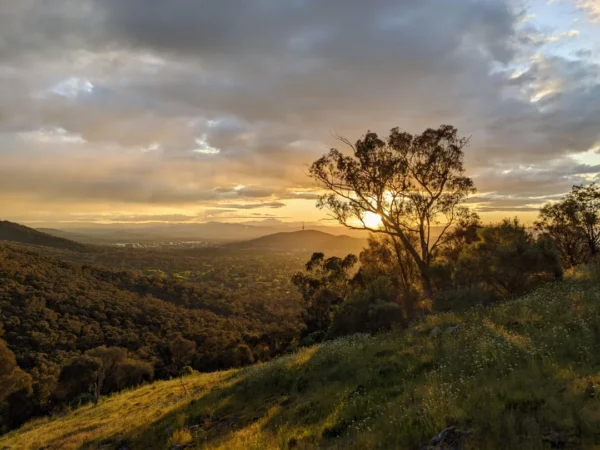There’s a pocket-sized waterbird that has travelled further than any other to enjoy Jerrabomberra Wetlands. With its comically elongate beak and caramel-and-black plumage, the Latham’s snipe migrates 8500km from Hokkadio, Japan, to south-eastern Australia each spring to feed on the rich pickings of the wetlands’ mudflats.
Its annual ‘holiday’ in Canberra – who doesn’t love an eternal summer? – is thrilling for birdwatchers, of course, but also for ecologists; a sure sign that the wetlands is thriving.
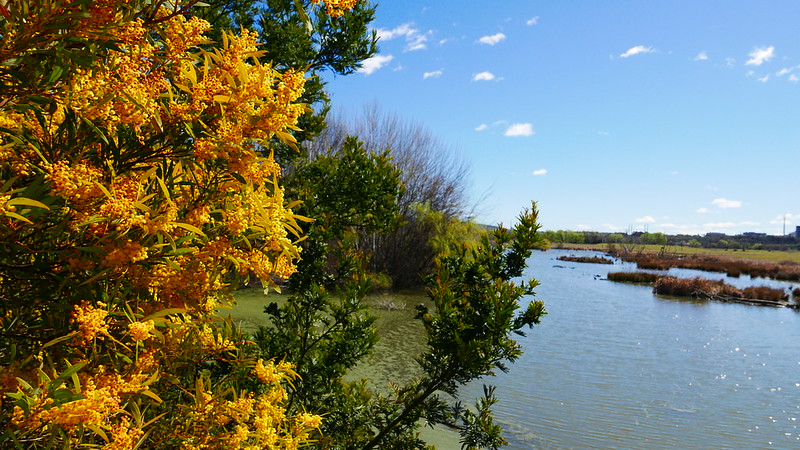
Wetland wonderland
A novel ecosystem that supports more than 200 bird species alongside platypus, rakali and the eastern long-necked turtle (to name a few), Jerrabomberra Wetlands didn’t always exist. It is, in fact, the construct of Walter and Marion Burley Griffin, designers of the city of Canberra. In May 1911, the duo won the Federal Capital Design Competition with a plan for a city that had, at its heart, a central artificial lake and a National Triangle, in which the most important national buildings were to be placed.
The design acknowledged that the Molonglo River floodplain, which sat smack bang in the middle of the city’s proposed site, was unsuitable for buildings, and in fact, better suited to a large water feature in the heart of the city (see the original plans, pictured below). While construction of the city began in 1912, it wasn’t until 1959 that the Commonwealth Government agreed to the construction of Lake Burley Griffin and committed funds to the project. It was completed in 1963, and a year later the lake filled entirely (after a long drought finally broke). During building, the eastern area of the lake became a popular wildlife habitat – waterbirds began to colonise the shallows, channels and ephemeral wetlands that formed and were fed by rainfall and ground water. This is now known as Jerrabomberra Wetlands.
Playground of plenty
Today, the waterways are home to a host of native species, including Murray cod and golden perch, both maintained by stocking. The largest freshwater fish in Australia and one of the largest in the world, the Murray cod is an apex predator in the Murray-Darling river system, but populations have declined significantly due to overfishing and habitat degradation. So much so that it’s listed as a threatened species. It’s another good news story, then, that the fish has found refuge in the wetlands. As you walk, be sure to keep your eye out for both of these slippery characters.
Another native to call the wetlands home is the rakali (a ridiculously endearing native water rat. Yes we said rat…). It, and the elusive platypus, are protected by swathes of riparian vegetation that lines the streams and rivers here and helps maintain its good health. Included in this vegetation are marsh club rush and native sedge, both of which are enjoying a resurgence after successful and ongoing cultural burns conducted by Murrumbung Rangers. Dean Freeman, Aboriginal Fire Officer, ACT Parks and Conservation, says burning exotic grasses, introduced to the wetlands to feed cattle, reduces the fuel load over bushfire season and allows native grasses to shoot back, providing nesting habitat for frogs, turtles and seed-eating birds.
With one-third of the wetlands classed as a wildlife refuge, it’s no wonder a bounty of Aussie wildlife, from eastern grey kangaroos and gang-gang cockatoos to kookaburras, striated thornbills, yellow-bellied water skinks, yellow-tailed black-cockatoos, freshwater turtles and micro-bats, call it home. And all within a 15-minute drive from Canberra’s city centre and in view of the Parliament House flagpole.
Did you know?
As you walk around the wetland, keep your eyes peeled for World War I trenches. yes seriously… Jerrabomberra is home to one of the best systems of war-time trenches in Australia.
From March 1916, the nearby Royal Military College at Duntroon hosted the AIF Officer Training School and the associated Trench Warfare & Bombing School.
The latter trained officers for the kind of warfare being employed in France and Flanders (Belgium), so, in turn, they could train their own men. Similar trench systems and schools were developed in Victoria, New South Wales, Western Australia, South Australia, Queensland and Tasmania.
From mid-1916 to mid-1917, more than 430 participants attended 12 schools at Duntroon, and the training was intensive, including the study of bombs and grenades, as well as bomb-throwing machines and trench tactics.
The trench system itself was multilayered, incorporating the latest in ‘scientific warfare’ – purposefully designed to support and sustain troops below the ground surface. In April 1916, the Governor-General described it as ‘the best system of trenches in Australia’.
After the war, the trench system was filled in, obscured by flooding and largely forgotten. In 1990 the site was included in the Jerrabomberra Wetlands Nature Reserve, and in 2014 was rediscovered (Indiana Jones style) during historical research into the area. A year later, archaeological work revealed that the trench system is still visible below the surface.
Today, you can follow the Trench Trail and jump back in time – the main layers of the Duntroon instructional trench system are accessible via the reserve car park off Dairy Flat Road. The 350m marked trail has no formal pathway.
A quick lap around the lake
Average depth: 4m
Maximum depth: 18m
Surface area: 6.64sq.km
Elevation: 556m above sea level
Length: 11km
Maximum width: 1.2km
Shoreline: 40.5km
Walking distance: Approx. 30km
Catchment area: 183.5sq.km
Water volume: 33,000,000 cubic metres
Take your togs
Lake Burley Griffin has three designated swimming beaches and enclosures:
Yarralumla Beach (West Lake)
Weston Park East (Tarcoola Reach)
Black Mountain Beach (Tarcoola Reach).


